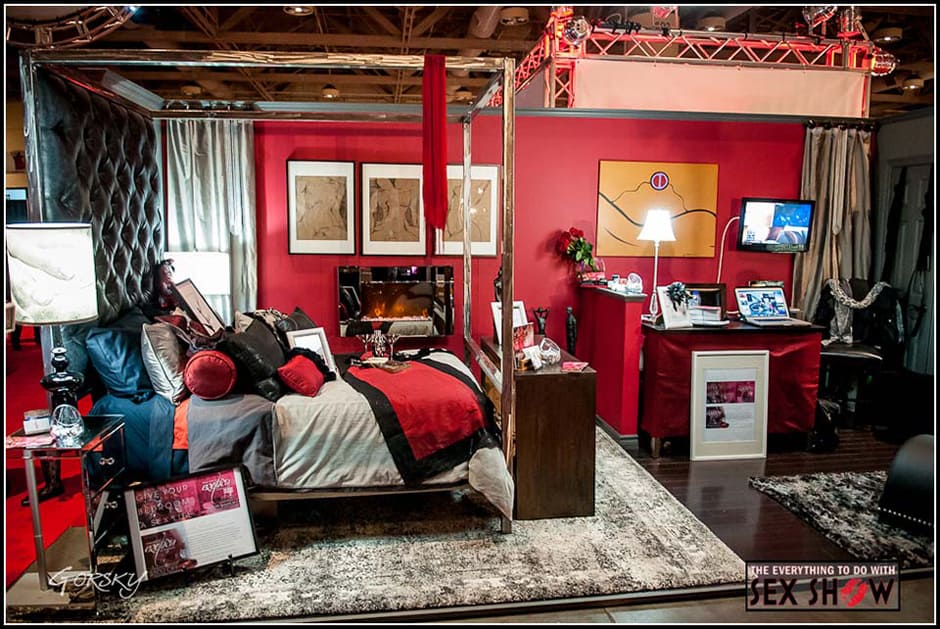Last weekend, the Direct Energy Centre hosted the fifteenth annual “Everything To Do With Sex Show” (ETDWSS). Over 150 exhibitors and speakers showcased the best in sex and romance goods for couples, singles, and groups. What seemed to be missing from North America’s largest sex consumer show, however, was just about everything to do with a healthy representation of sexuality and the presence of sexual education.
This week, The Varsity sat down with Rachel Costin of U of T’s Sexual Education Centre (SEC) to discuss problems of diversity and awareness, or lack thereof, at the three-day exhibit.
Being a first-time attendee of the ETDWSS, I didn’t quite know what to expect. I spent a couple of hours walking through the various booths, listening in on a “Kinky Bondage Basics” workshop and ending the evening with a burlesque performance by Roxi D’Lite. In the end, however, I found myself more concerned with what I didn’t see.
Although the show’s attendees were surrounded with flashy products, glamorous stage performances, and seminar speakers, it quickly became apparent that the ETDWSS encouraged a very particular demographic — one that didn’t seem too representative of anyone that wasn’t straight, confident, or heterosexual.
The SEC’s Rachel Costin spoke about the U of T organization’s first time at the show this year: “The problem we found with the ETDWSS is that it was a very hetero-normative environment. It pushes the standard ideal of a woman’s body and the standard attractiveness — [specifically] the attractiveness of white women — on people.”
The SEC, which encourages an environment of positivity, diversity, acceptance and support in all aspects of human sexuality and relationships, found itself going unnoticed among the crowd of booths showcasing leather, toys, lingerie and vibrators last week. “We weren’t what people were there for. They weren’t coming for sexual education, they were coming to buy sex toys,” said Costin.
Despite going into the show knowing its objective was different from their own, SEC members at least hoped to find a place for themselves amongst the different offerings. “Our goal was to hopefully be visible,” says Costin, “as a resource available to people, because there are quite a few university students interested [who] do go to the show.”
Sadly, the group’s information on health centres around the city, dealing with transphobia, beginner BDSM, and free contraceptives didn’t seem to make the cut in the idealized world of the ETDWSS.
“We were too alien to the show… Most people skipped by our booth and were confused as to why we were there,” explained Costin.
Given the ETDWSS’s emphasis on exciting sexual activities, I wondered if U of T students were aware of how to practice them in a safe way. “…The mainstream side of the ETDWSS, with the sex toys, is what is pushed on them in the media…It is forcing a standard on them of what your sex life should be, which is really unfortunate,” said Costin.
When asked if she would recommend the show to U of T students, Costin replied honestly: “I don’t think it’s necessarily worth it…It’s a novelty, and it’s not necessarily the best place to go for education.”
In today’s culture, sex toys and kinky merchandise are finding their way into mainstream attitudes about what having sex is like, and since such products are now readily available, “you don’t have to go to this one show to find [them],” said Costin. “There are definitely a bunch of other places [that] are better able to provide a more inclusive service,” she said.
Whether this trend suggests a greater accessibility of products for interested consumers or forces a more limited view of how sex should be is still up for debate. While the world of toys, bondage, and sexy costumes is a justified and natural part of many students’ sex lives, the problem with the ETDWSS was its presentation of these kinks as the only possibility. By disregarding so many crucial aspects of sexuality, the ETDWSS just couldn’t live up to its title.


